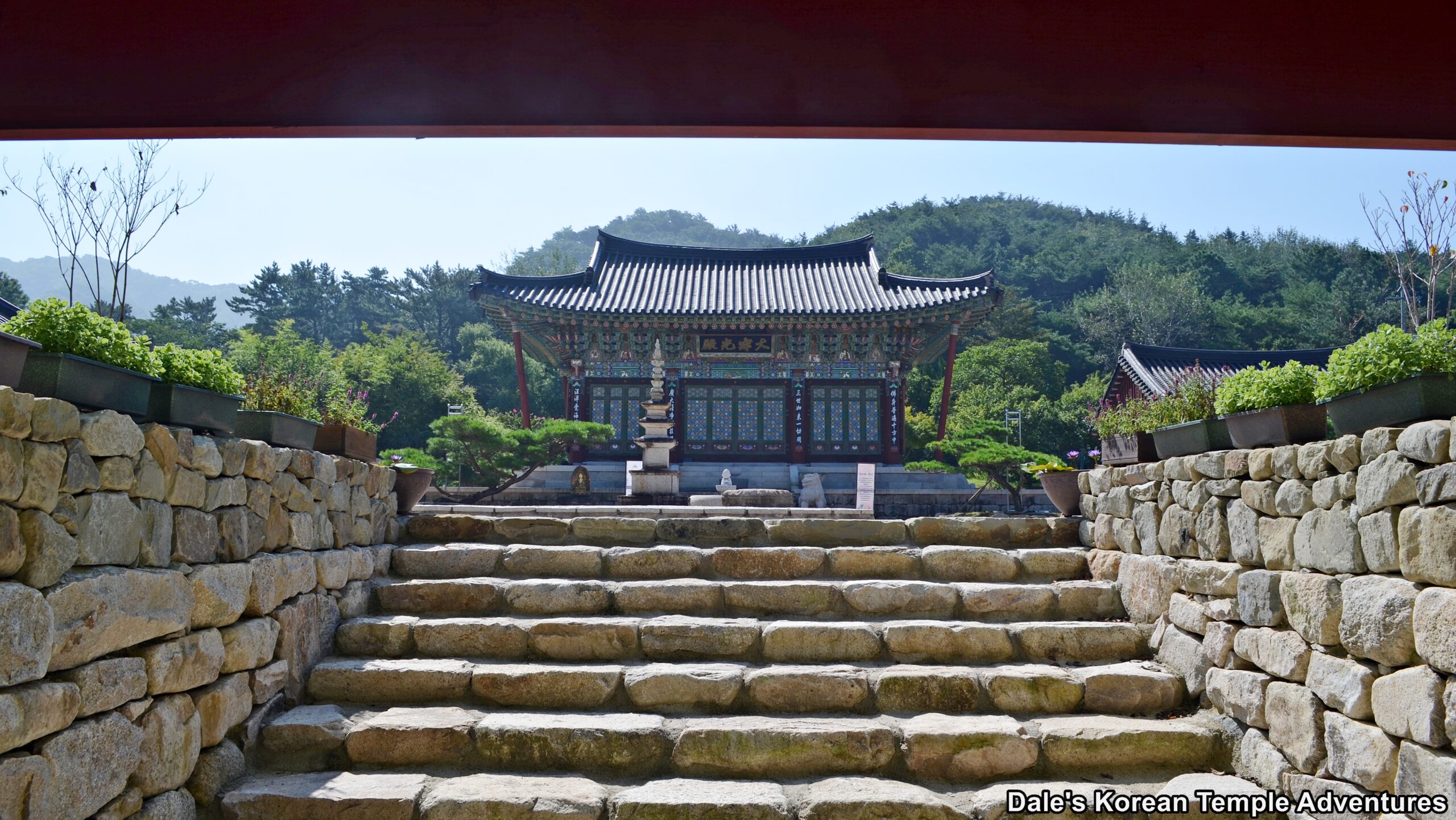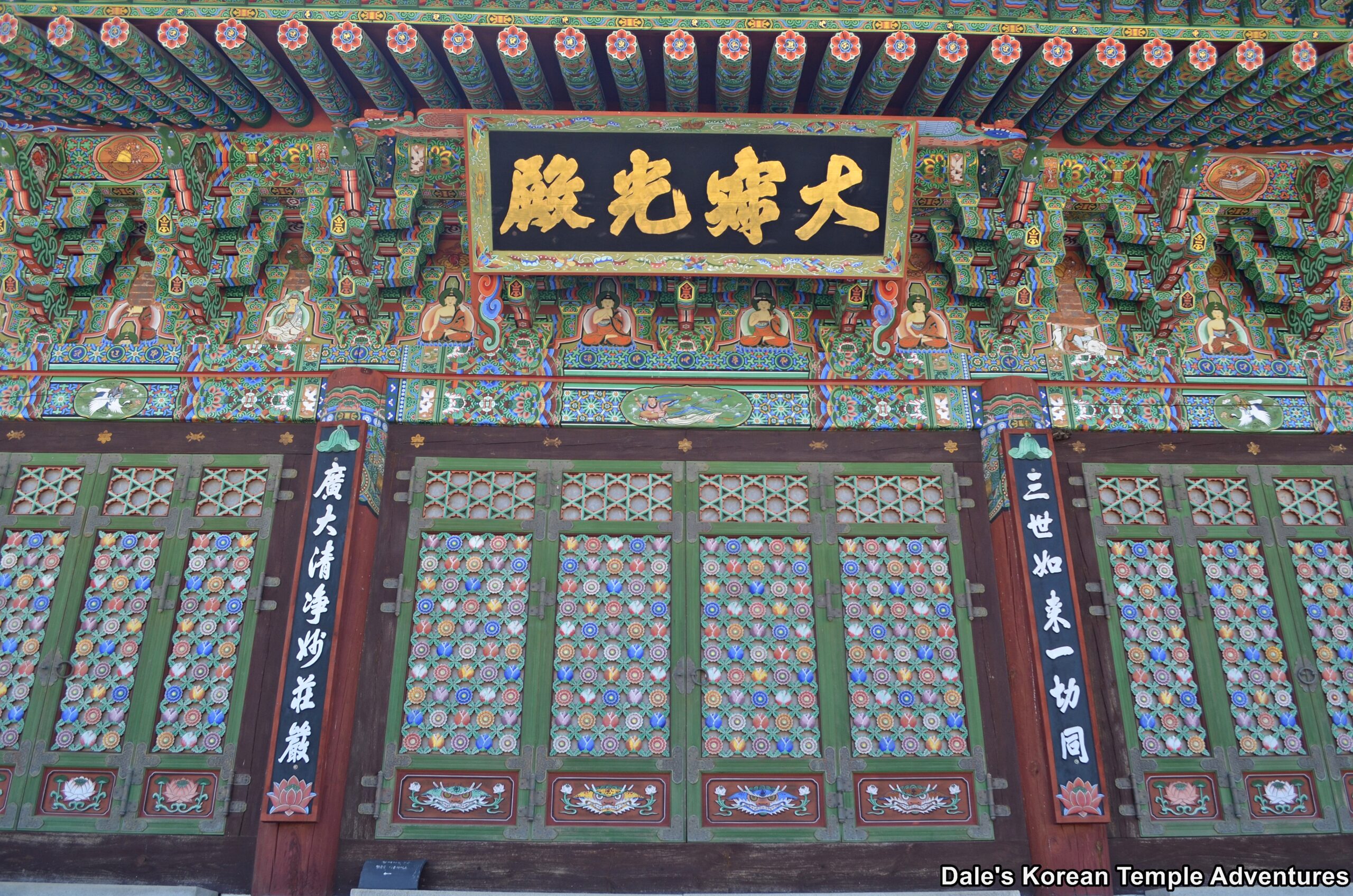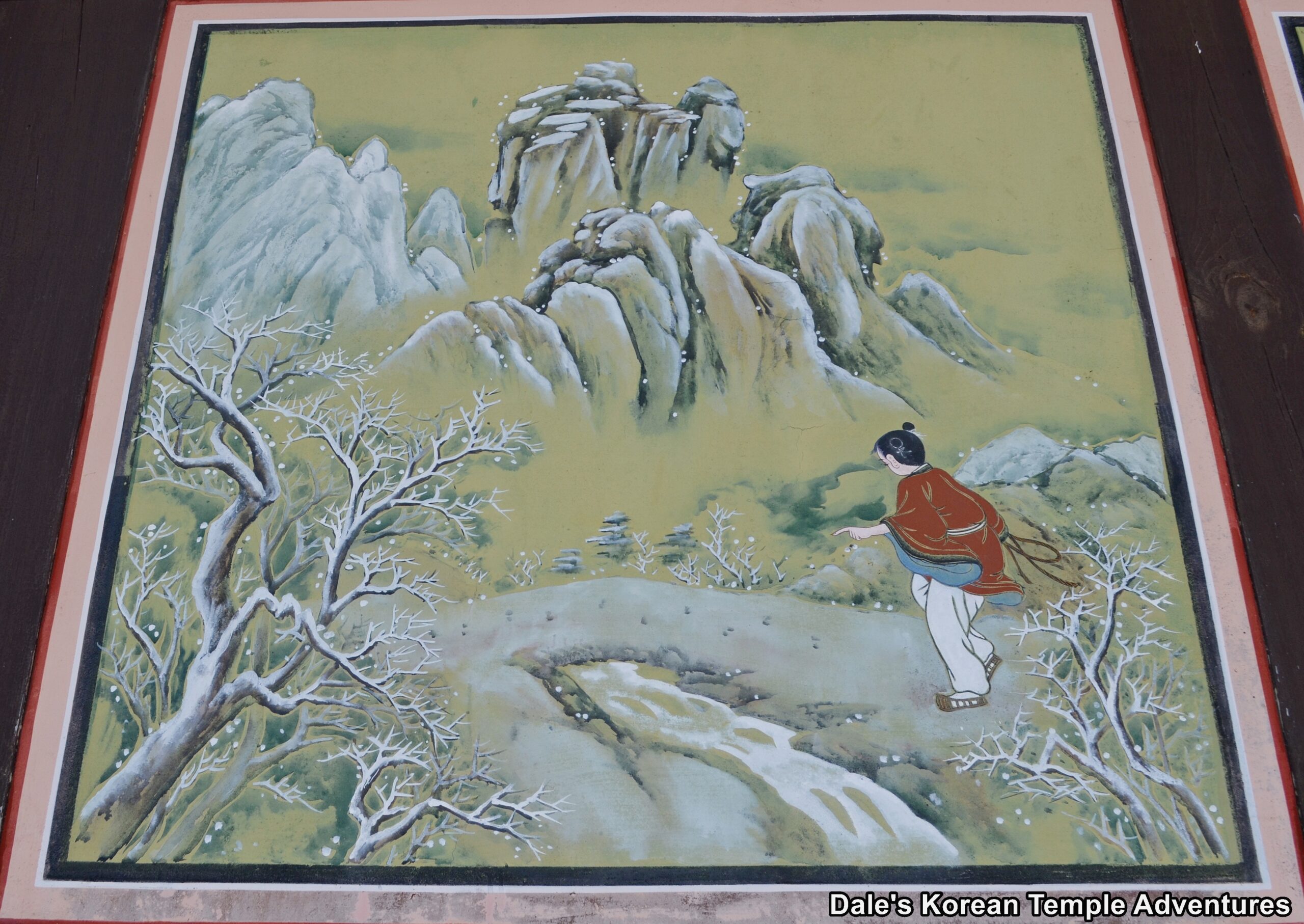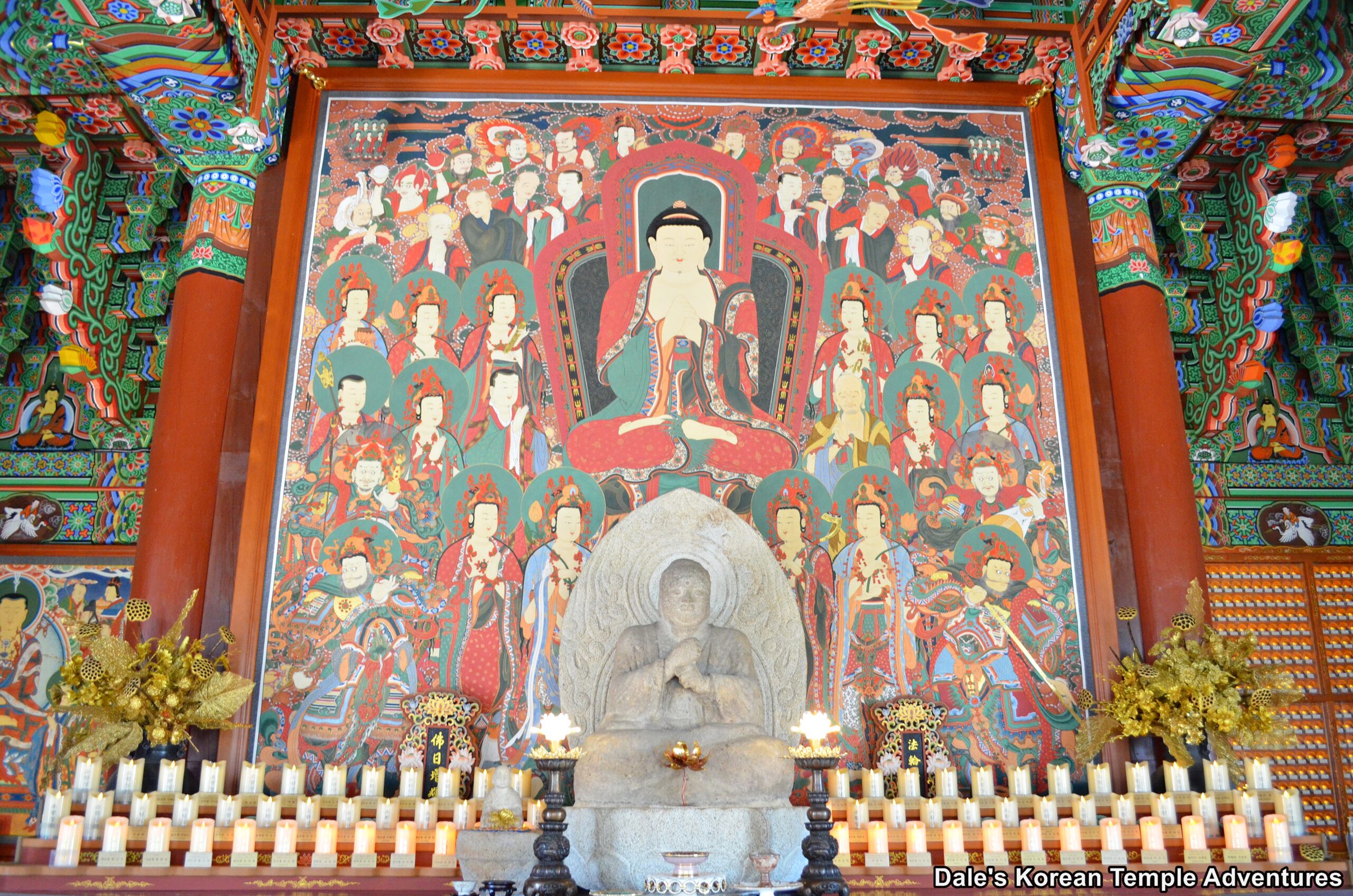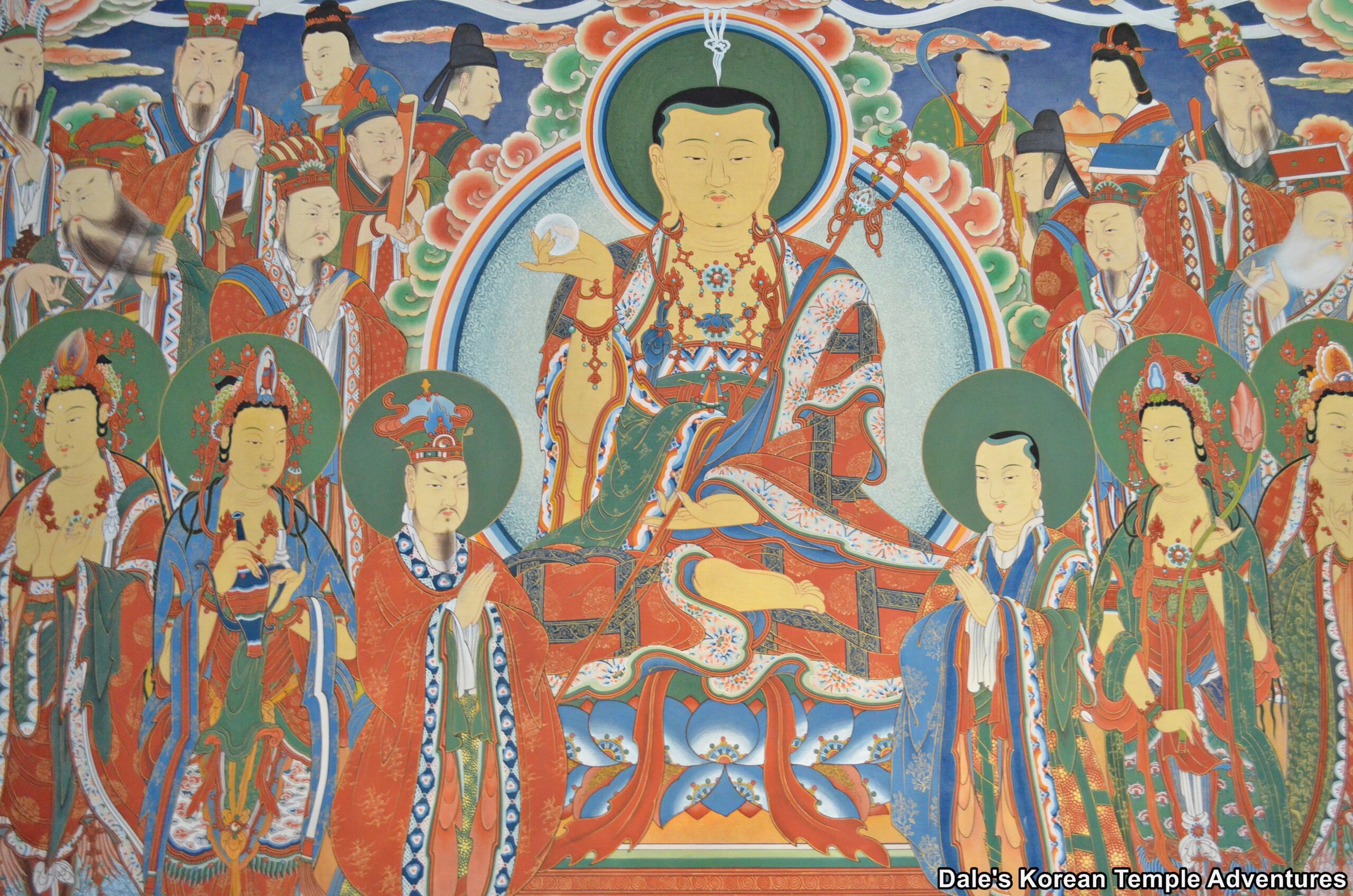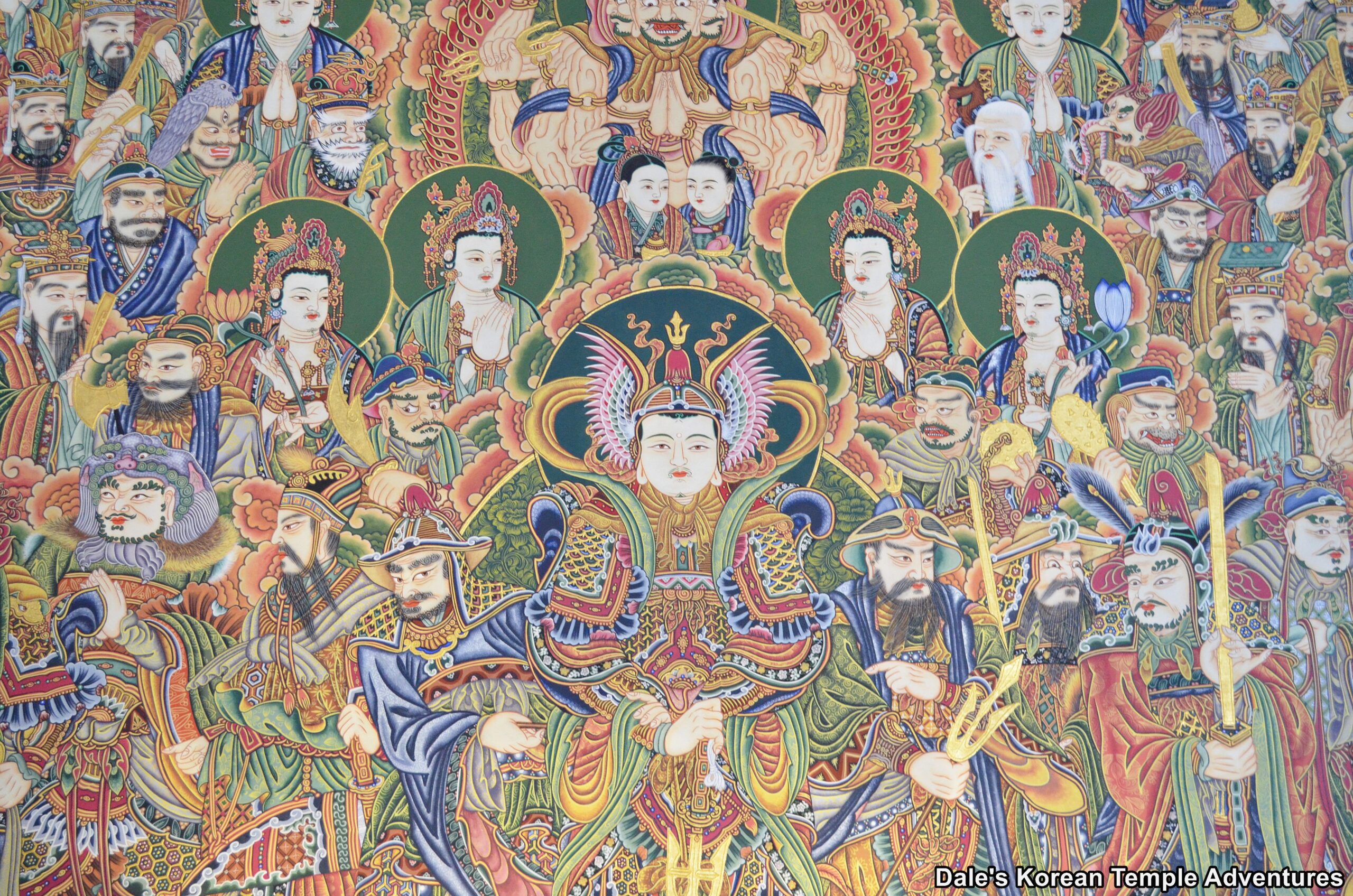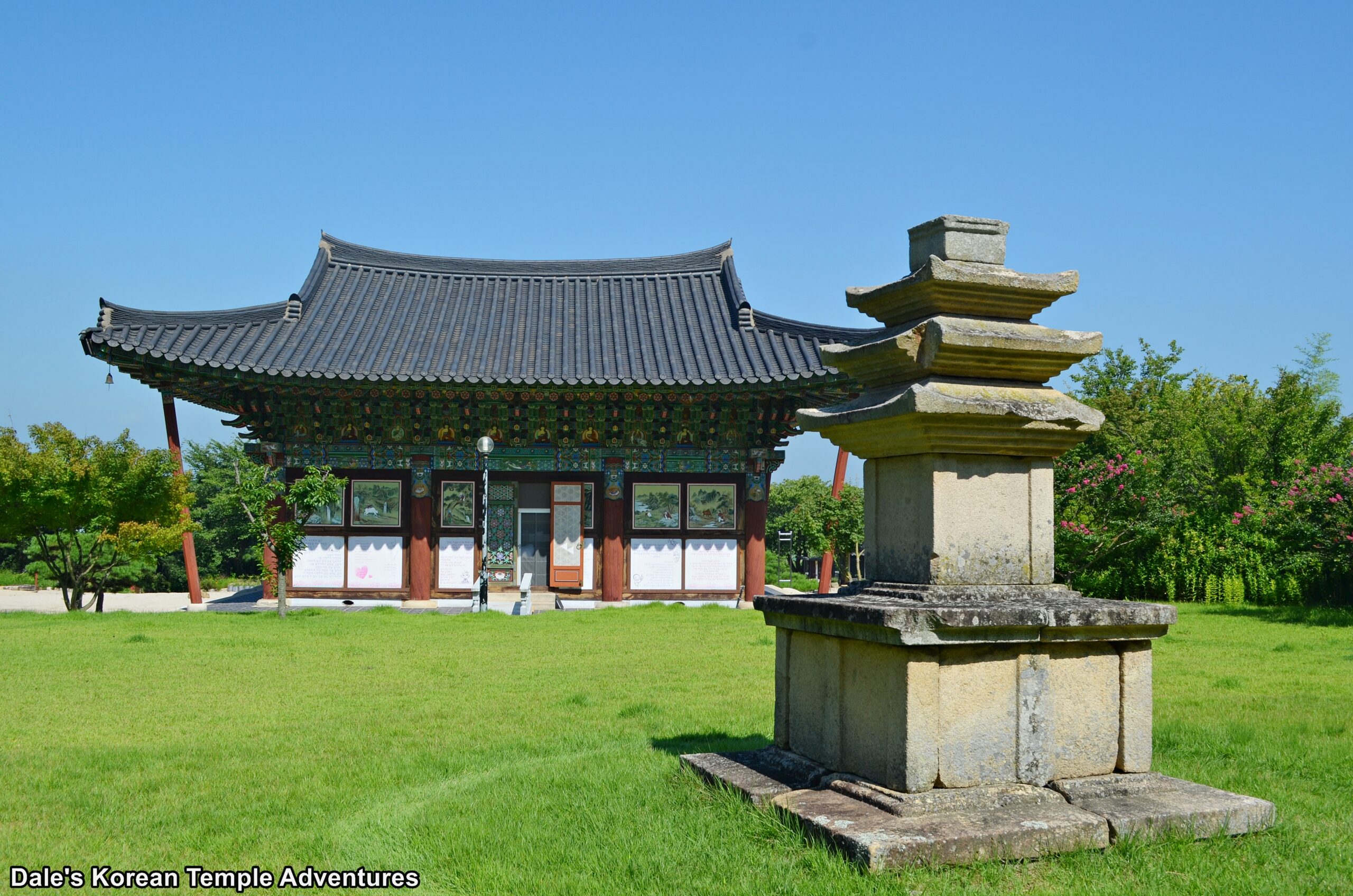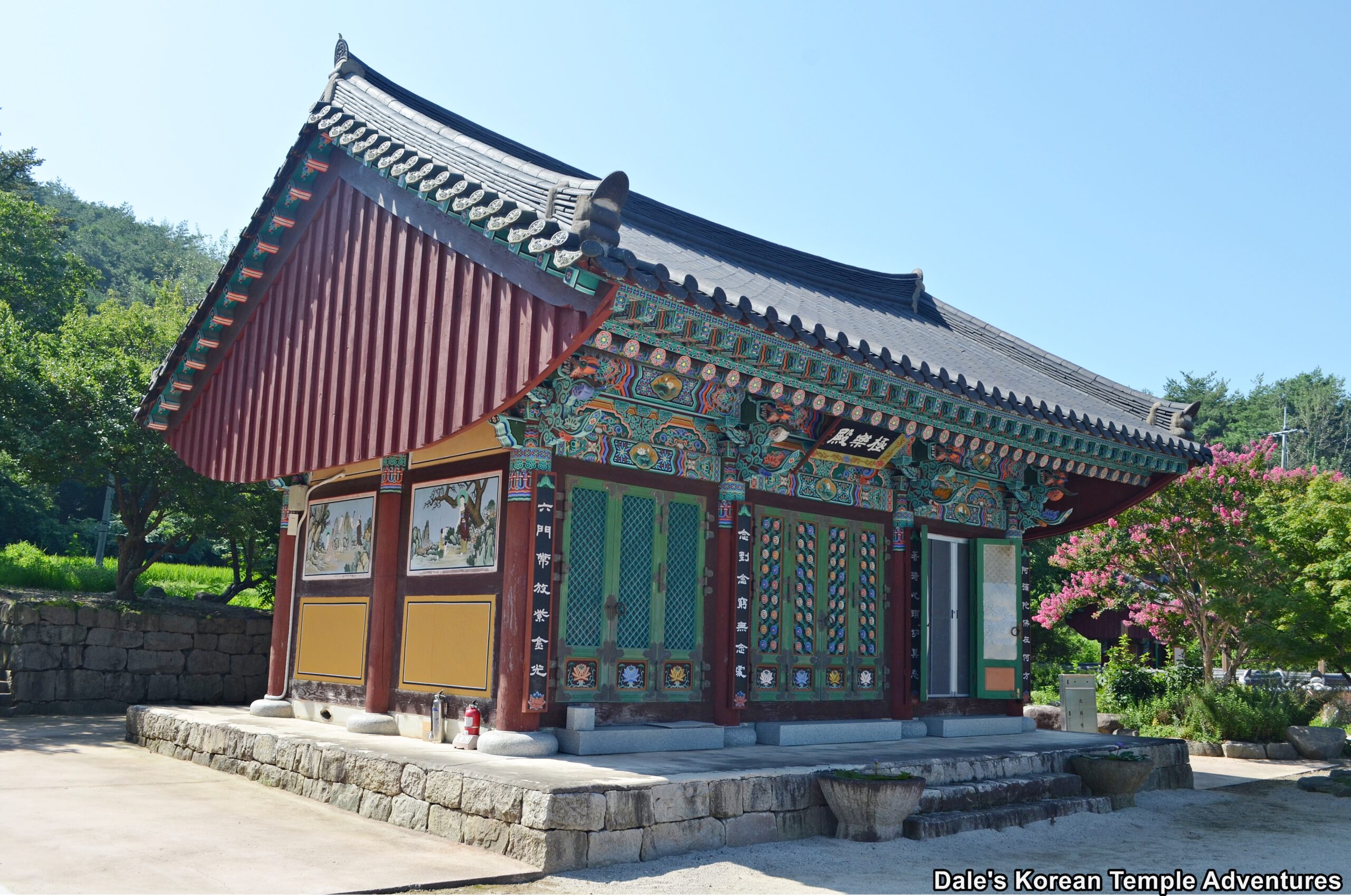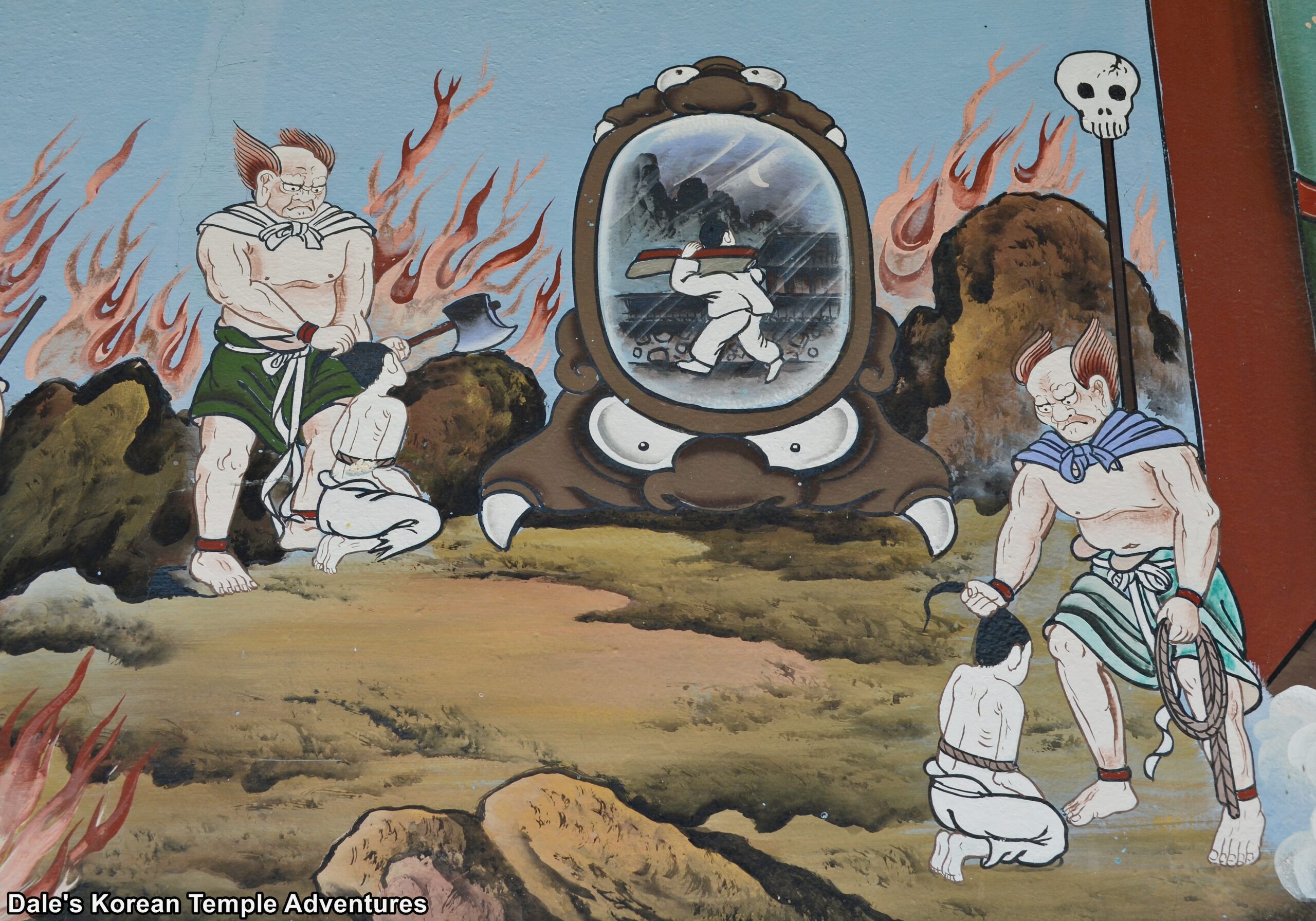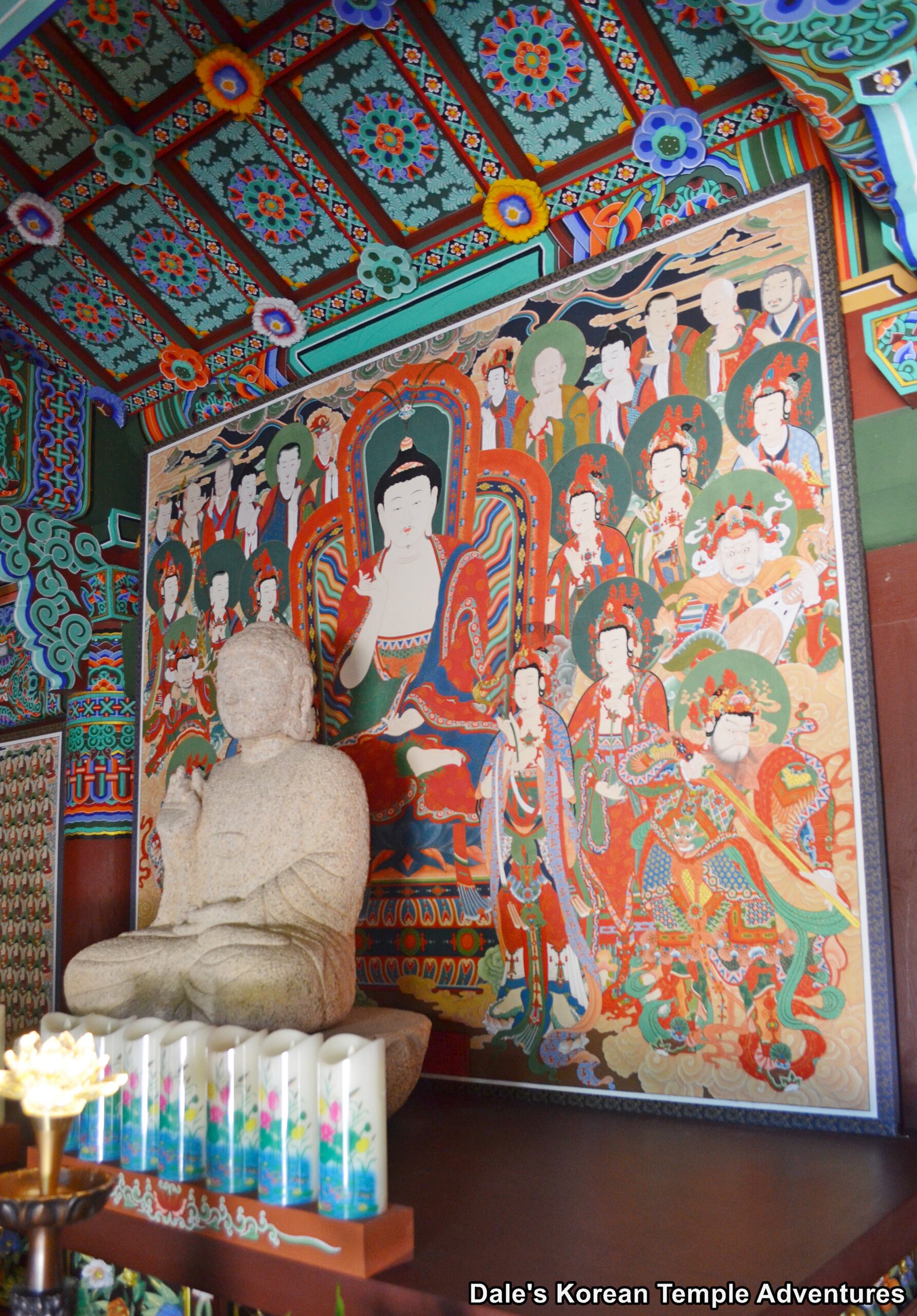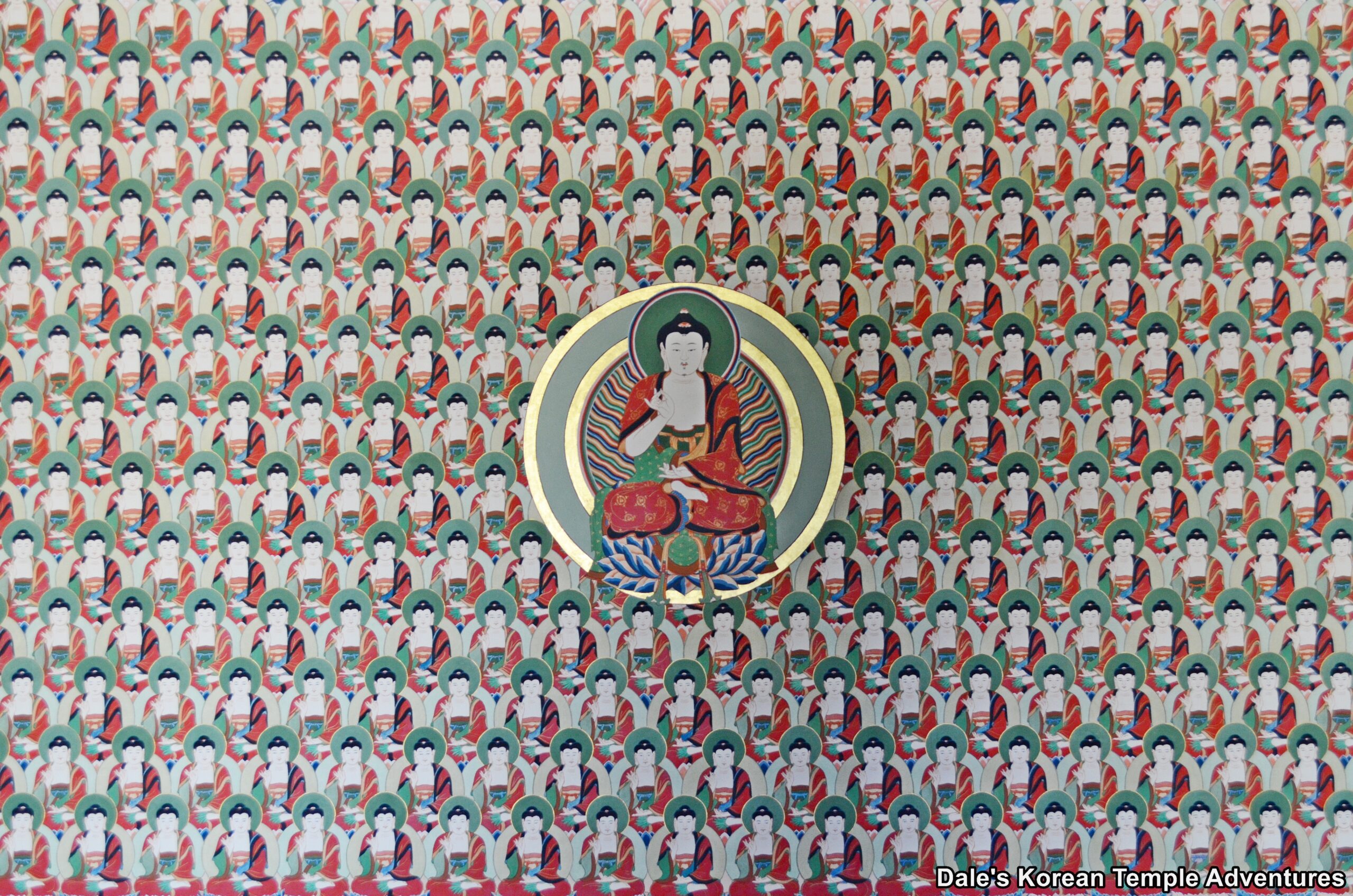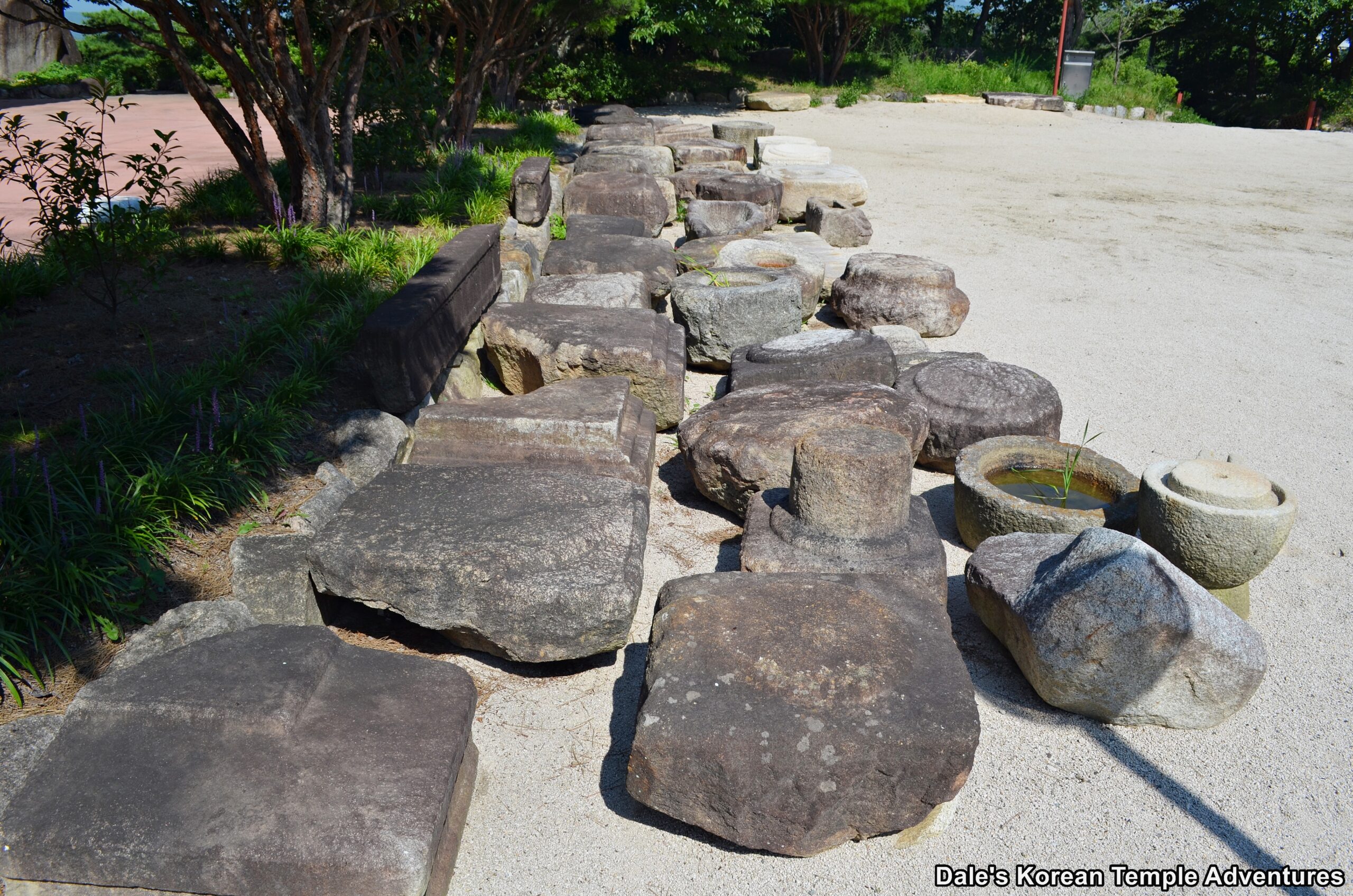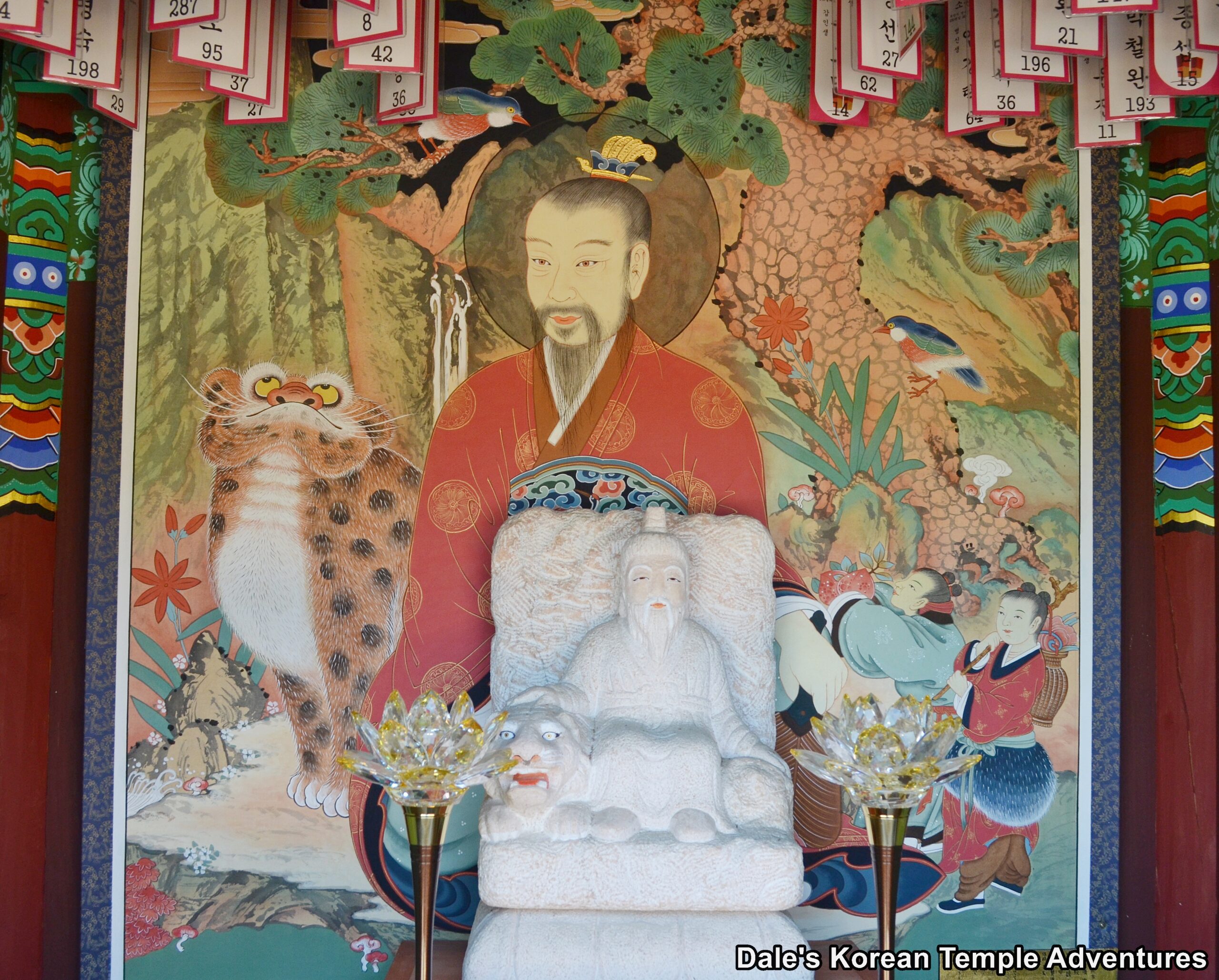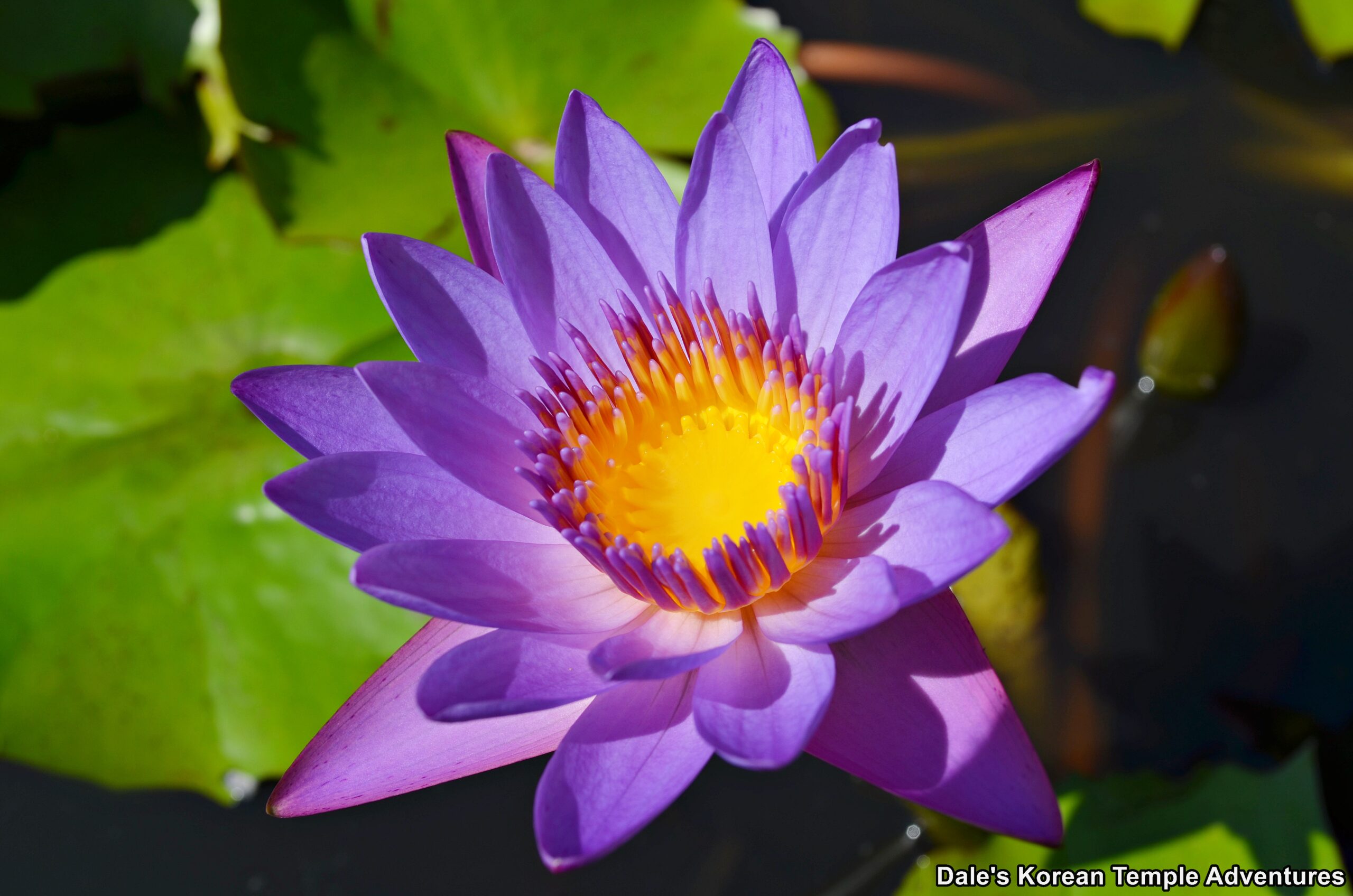Gamsansa Temple – 감산사 (Gyeongju)

Temple History
Gamsansa Temple, which means “Sweet Mountain Temple” in English, is located about two kilometres to the south of the famed Bulguksa Temple on Mt. Tohamsan (745.7 m) in eastern Gyeongju. According to the inscriptions found on the “Stone Standing Maitreya Bodhisattva of Gamsansa Temple” and the “Stone Standing Amitabha Buddha of Gamsansa Temple,” both of which are National Treasures, Gamsansa Temple was first built on “‘Nirvana Day’ (February 15th) in the eighteenth year of King Seongdeok of Silla (r. 702-737 A.D.).” Based on this information, Gamsansa Temple was first established in 719 A.D.
As to who first commissioned the construction of Gamsansa Temple, it was Kim Jiseong (651-720 A.D.). Kim Jiseong was a high-ranking Silla official. Officially, Kim Jiseong was a “Jungachan,” which was the sixth-highest rank of the seventeen ranks of the Silla Kingdom (57 B.C. -935 A.D.). In 705 A.D., Kim traveled to the Tang Dynasty (618–690, 705–907 A.D.) as part of a Silla mission. The inscriptions of the two previously mentioned National Treasures, which were also commissioned in 719 A.D., Kim held the rank of “Sangsa,” which was probably a title he received from the Tang Dynasty court. Upon his return to the Korean Peninsula, Kim resigned from government service in 718 A.D. at the age of sixty-seven. In retirement, Kim found peace and solitude, which allowed him to purse an in-depth study of the Buddha’s teachings. In particular, Kim studied the Yogacarabhumi-sastra (Treatise on the Foundation for Yoga Practitioners) by Asanga (fl. 4th century A.D.). By 719, Kim Jiseong donated his fortune and his land to build Gamsansa Temple. By building Gamsansa Temple, Kim hoped that that his devotion would move the Buddha to bring peace to his deceased parents (Il Gilgan and Gwan Chori), as well as protect the Silla king and his royal family. But in 720 A.D., and at the age of sixty-nine, Kim would die.
From the time of its construction, and up until 1915, very little is known about the history of Gamsansa Temple. In 1915, during Japanese Colonial Rule, the “Stone Standing Maitreya Bodhisattva of Gamsansa Temple” and the “Stone Standing Amitabha Buddha of Gamsansa Temple” were discovered on the temple site. These two statues are now housed at the National Museum of Korea because for the longest time there simply wasn’t a temple at the Gamsansa Temple site. It is only over the past couple of decades that Gamsansa Temple was rebuilt.
In total, Gamsansa Temple was home to two National Treasures. They were the the “Stone Standing Maitreya Bodhisattva of Gamsansa Temple” and the “Stone Standing Amitabha Buddha of Gamsansa Temple.” The “Stone Standing Maitreya Bodhisattva of Gamsansa Temple” is National Treasure #81, while the “Stone Standing Amitabha Buddha of Gamsansa Temple” is National Treasure #82. As was previously mentioned, these two statues are now housed in Seoul at the National Museum of Korea. In addition to these two National Treasures, Gamsansa Temple is currently the home to a Tangible Cultural Heritage, which is the “Seated Stone Vairocana Statue at Gamsansa Temple,” as well as the “Three Storied Stone Pagoda of Gamsansa Site,” which is a Cultural Properties Materials.
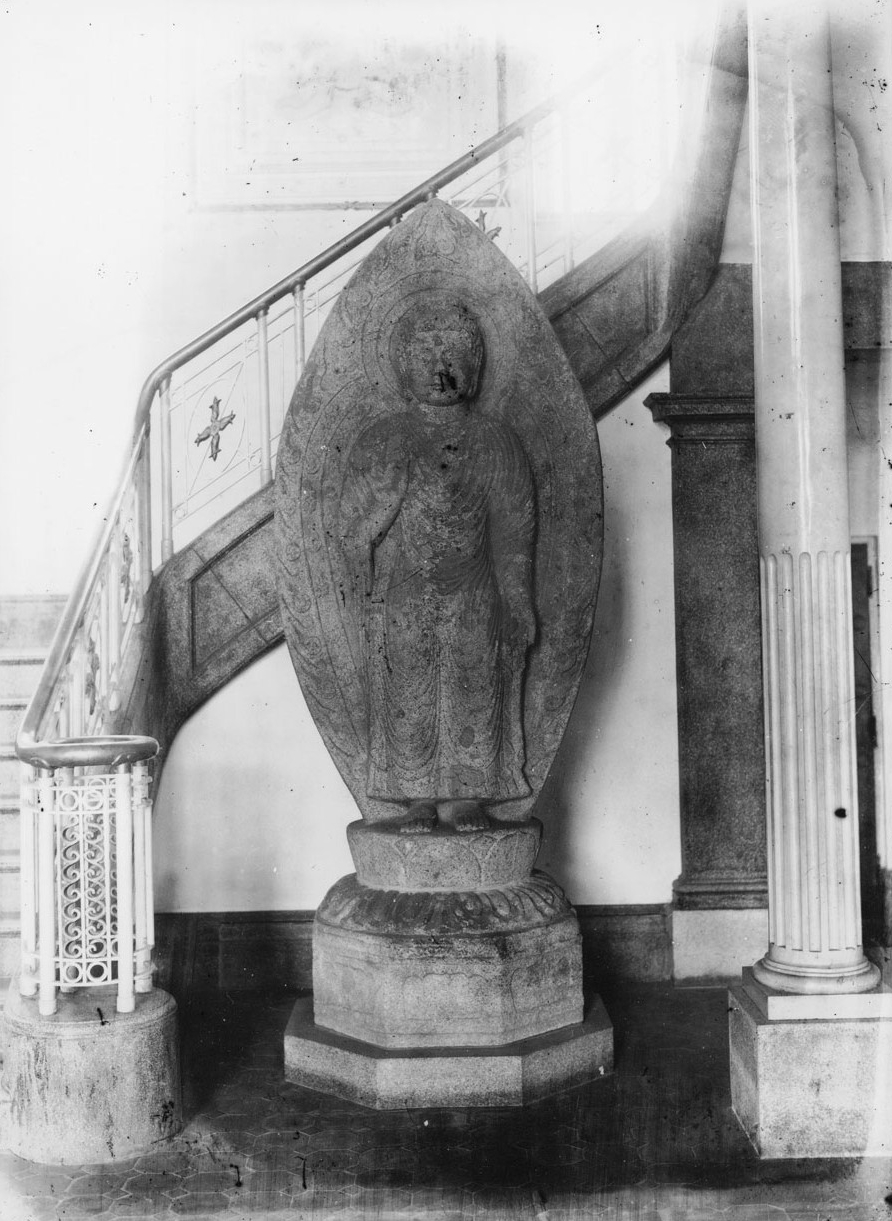
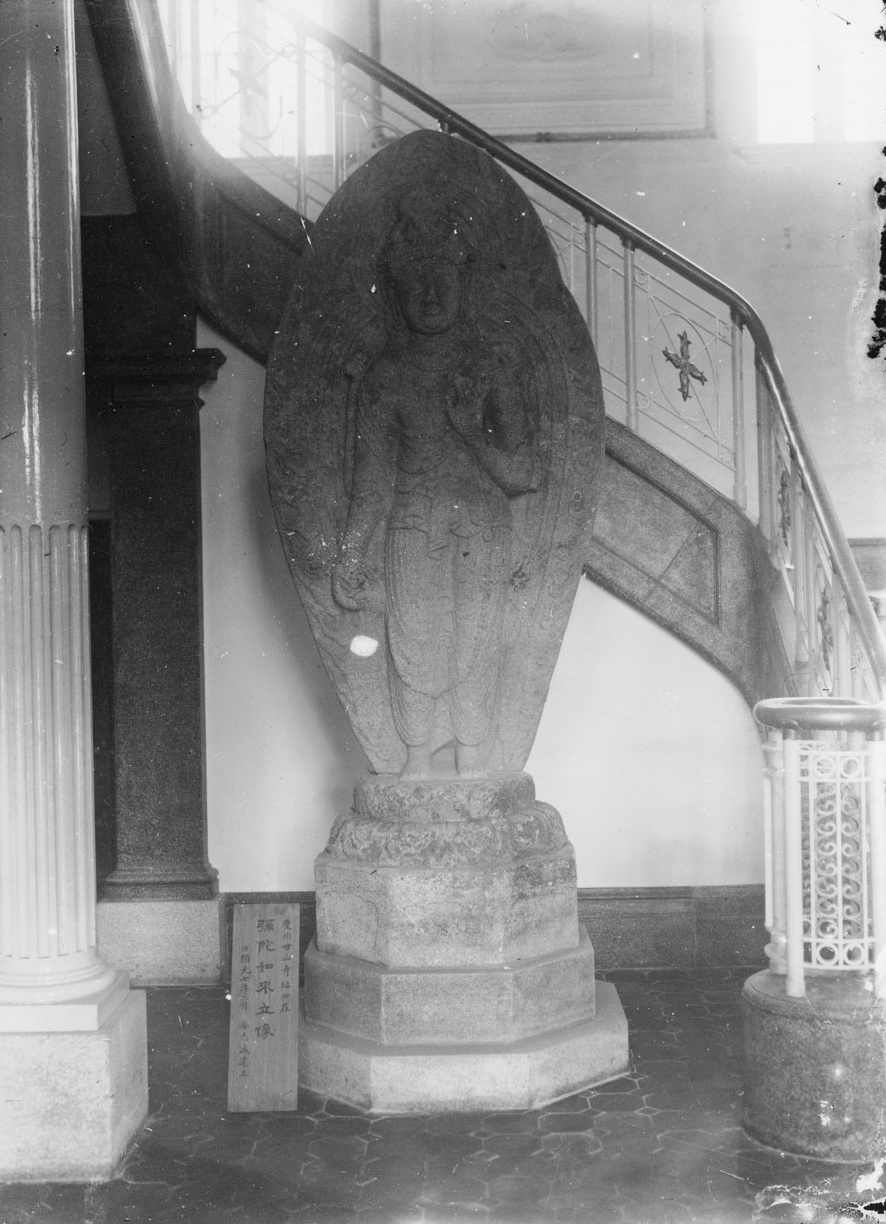
Temple Layout
You first approach the modern Gamsansa Temple from the northern temple parking lot. Heading south, you’ll find the Boje-ru Pavilion to the east. The first story of the structure acts as an entry to the rest of the temple grounds including the main temple courtyard. The second story of the structure is used for larger dharma talks. This large entry gate is beautifully adorned with vibrant dancheong colours.
Stepping into the main temple courtyard, you’ll find a three-story pagoda in the centre of the temple courtyard. To the right rear of this three-story pagoda is a small, crooked wooden pavilion that looks out onto neighbouring Gyeongju. There are also planters in this area with beautiful lotus flowers growing in them, as well as a more modern stone statue dedicated to Birojana-bul (The Buddha of Cosmic Energy) on a large boulder.
Beyond the three-story pagoda, but before arriving at the Daejeokgwang-jeon Hall, you’ll find a stone fountain with an image of a child-like monk at its centre. Making your way up to the main hall, you’ll find two stylized stone lions book-ending the stone stairs that lead up to the Daejeokgwang-jeon Hall. The exterior walls are adorned with the Shimu-do (Ox-Herding Murals), while the eaves are adorned with both dancheong and images of various Buddhas and Bodhisattvas.
Stepping inside the Daejeokgwang-jeon Hall, you’ll find the “Seated Stone Vairocana Statue at Gamsansa Temple.” It’s believed that this image of Birojana-bul dates back to the 8th century (around the time of the temple’s founding), which makes it one of the oldest extant images of this Buddha in Korea. The statue was missing its original nimbus and pedestal, and the current nimbus and pesdestal were added more recently. Additionally, the head and side of the statue were also damaged and later repaired. As a result, it’s difficult to determine what the statue originally looked like because of the extensive damage on the statue throughout the centuries. Currently, Birojana-bul is seated with its legs crossed and with knees wide apart. And mudra (ritualized hand gesture) that the statue is making of the “Wisdom Fist,” which is typical of Birojana-bul. The “Seated Stone Vairocana Statue at Gamsansa Temple” is a Tangible Cultural Heritage.
To the left of the main altar is a painting dedicated to Jijang-bosal (The Bodhisattva of the Aftelife), as well as a picture of the “Stone Standing Amitabha Buddha of Gamsansa Temple.” And to the right of the main altar you’ll find a large Shinjung Taenghwa (Guardian Mural), as well as a picture of the “Stone Standing Maitreya Bodhisattva of Gamsansa Temple.”
To the rear of the Daejeokgwang-jeon Hall is the “Three Storied Stone Pagoda of Gamsansa Site.” Over a small bridge and in an open field is the Unified Silla (668-935 A.D.) pagoda. In 1965, the pagoda was reconstructed. The pagoda now stands 3.3 metres in height. The lower part of the base consists of four stones. As for the upper part of the base, there are pillars carved on both the corners and centres of the four sides. The pagoda is partially damaged with both the second and third body stones missing.
To the left of the Daejeokgwang-jeon Hall and the “Three Storied Stone Pagoda of Gamsansa Site” are the living quarters and administrative office at Gamsansa Temple. And to the immediate right of the main hall, you’ll find the Geukrak-jeon Hall. The exterior walls to this building are adorned with murals of the Siwang (The Ten Kings of the Underworld) and the realms that they rule over. Stepping inside the Geukrak-jeon Hall, you’ll find a stone statue of Amita-bul (The Buddha of the Western Paradise) on the main altar. To the right and left of the main altar are a twin pair of paintings with hundreds of smaller images of Amita-bul. And on the far right wall, you’ll find a modern Shinjung Taenghwa (Guardian Mural).
And to the left of the Geukrak-jeon Hall, you’ll find the diminutive Sanshin-gak Hall. Instead of being able to step inside the shaman shrine hall, visitors need to worship outside the shrine. The painting housed inside the Sanshin-gak Hall is a modern interpretation of the classic Sanshin (Mountain Spirit) painting found inside the Jungakdan Shrine in Gyeryongsan Mountain at Sinwonsa Temple in Gongju, Chungcheongnam-do. Standing next to the image of Sanshin is a quizzical tiger that looks up at the branch of a tree that has a magpie perched upon it.
Out in front of the Sanshin-gak Hall, you’ll find the stone artifacts from the historic Gamsansa Temple. And to the south of these stone artifacts, you’ll a large pond with a pagoda at its centre, as well as a building for the Temple Stay program at Gamsansa Temple.
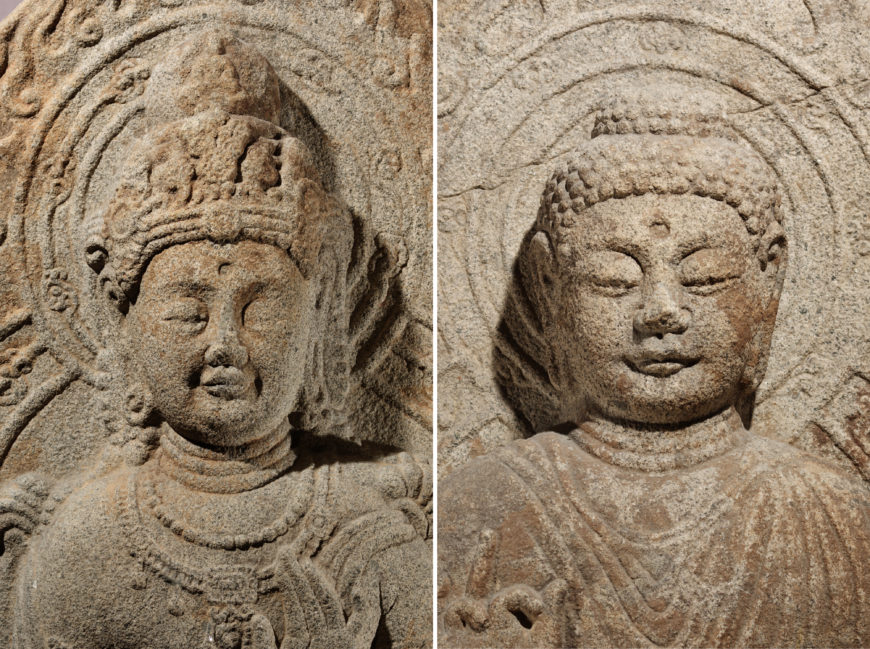
The Statues of Gamsansa Temple
There are two statues that once resided at Gamsansa Temple that are now housed in the National Museum of Korea in Seoul. They are the “Stone Standing Maitreya Bodhisattva of Gamsansa Temple” and the “Stone Standing Amitabha Buddha of Gamsansa Temple.” Both were commissioned together in 719 A.D. by Kim Jiseong (the founder of Gamsansa Temple). The Maitreya (Mireuk-bul, the Future Buddha) was commissioned for Kim’s mother, while the Amitabha (Amita-bul, the Buddha of the Western Paradise) was commissioned for Kim’s father.
According to the inscriptions on the statues, which allows us to know for whom the statues were originally commissioned, we can glean even more information about their origins. The inscriptions also record how the ashes to Kim’s mother (who died at the age of sixty-six) and father (who died at the age of forty-seven) were scattered by the shore of Heunji (欣支) on the East Sea. Additionally, we learn that the statues were made to wish for the longevity and fortune of the king and for Kim Gaewon Ichan (the son of King Muyeol of Silla). Kim Jiseong, and based on the inscriptions on the statues, also hoped that his brothers, sisters, his wives, and all sentient beings of the world to attain Buddhahood. And these inscriptions were later quoted by the Samguk Yusa, Memorabilia of the Three Kingdoms in English, during the 13th century.
A rather interesting feature of the statues is that the inscriptions have notable differences in their writing style. Examples of this can be seen in the inscription on the “Stone Standing Amitabha Buddha of Gamsansa Temple” which uses the honourific terms when referring to Kim Jiseong. It also states that the inscription was composed by Nama Chong by the king’s orders and then transcribed by the monk Gyeongyung and Kim Chiwon. Also, the final line of this inscription on the Amita-bul statue details how Kim Jiseong died on April 22, 720 A.D. at the age of sixty-nine. The Maitreya statue is absent of this detail; therefore, it’s believed that the statue dedicated to Amita-bul was completed after Kim’s death, while the Mireuk-bul statue was completed during his lifetime.
As for the style of the two statues, they are important because they demonstrate the Buddhist sculpture style of Unified Silla that developed in the eighth century. Some of these distinguishing features are the thick eyelids and wide face. Also, despite their large size and weight, the two statues still exude a sense of serenity. However, the three-dimensional quality that will later develop by the mid-eight century as exemplified by the contents of Seokguram Grotto have yet to realized. Overall, though, the two statues from Gamsansa Temple display a delicate piouness. And the work are more refined in style than their predecessors in Silla Buddhist art.
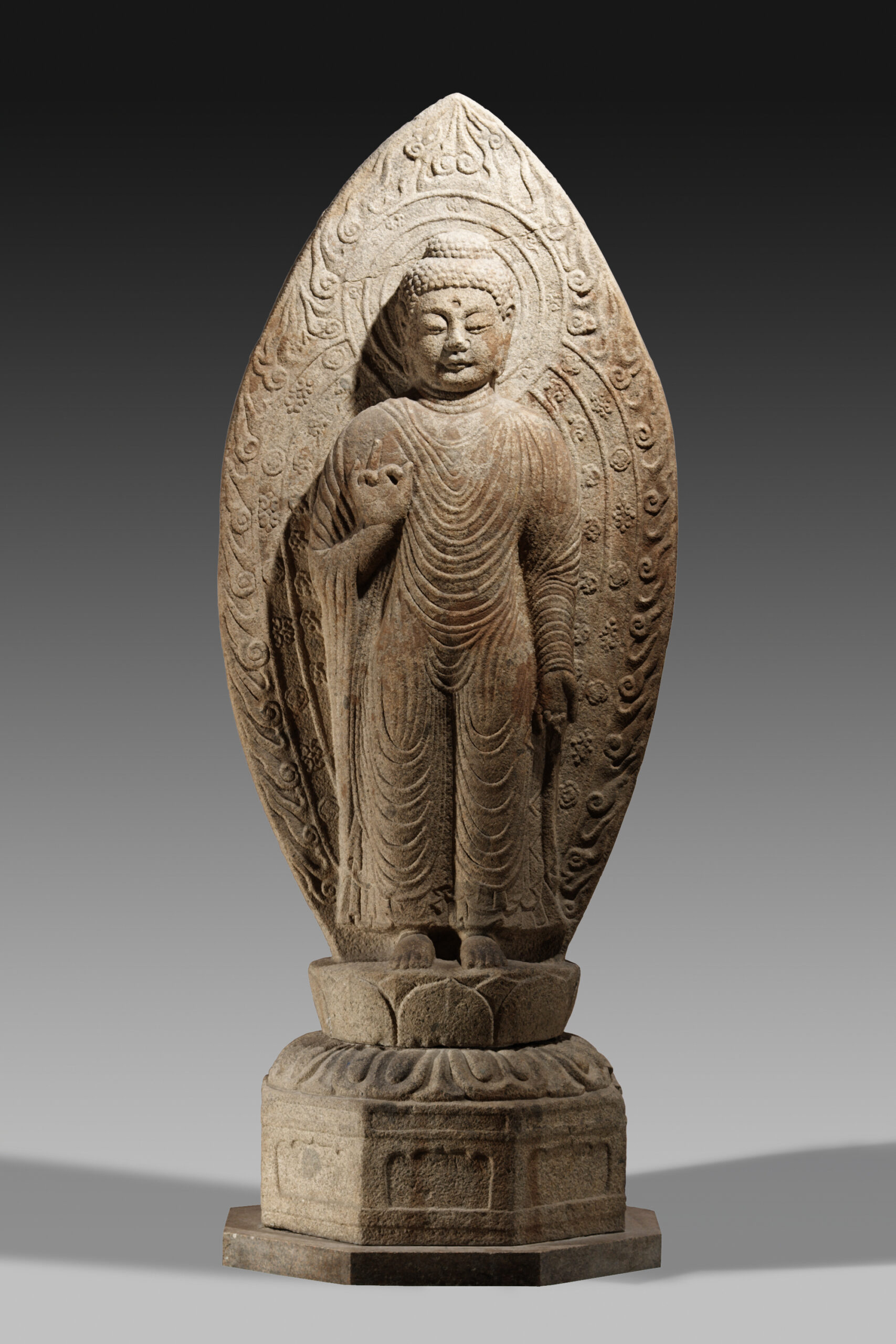

More specifically, the “Stone Standing Maitreya Bodhisattva of Gamsansa Temple,” which is the newer of the two, is more immense than the “Stone Standing Amitabha Buddha of Gamsansa Temple.” The statue stands 2.57 metres in height. The Mireuk-bul (Future Buddha) statue is adorned with a variety of exotic clothing and jewelry, including an ornate crown, double necklaces, and a long ornamental cloth hanging down the chest and arms. Additionally, a carved ornate bracelet appears on its arms, and a skirt is folded around its waist and decorated with jewels. The clothing and acessories follow the overall tradition of this time in East Asian Buddhist artistry.
However, while the statue follows in the tradition of Buddhist artwork from the Tang Dynasty and the eleven-faced Avalokitesvara Bodhisattva (Gwanseeum-bosal, the Bodhisattva of Compassion) from Japan’s Horyuji Temple, it also has distinct features all of their own. Examples of this uniqueness are found in the standing pose and crown with a tiny Bodhisattva that appears to be Gwanseeum-bosal in it. Additionally, and according to the 13th century Samguk Yusa, or the Memorabilia of the Three Kingdoms in English, documents how the “Stone Standing Maitreya Bodhisattva of Gamsansa Temple” was the “Maitreya Bodhisattva, the deity for the main hall of the temple.” With this knowledge, we can assume that Mireuk-bul was prominent at Gamsansa Temple and Silla society as a whole. The “Stone Standing Maitreya Bodhisattva of Gamsansa Temple” is National Treasure #81
The “Stone Standing Amitabha Buddha of Gamsansa Temple,” on the other hand, stands 1.74 metres in height. This statue, of the two, is assumed to be the older of the two, wears an outer robe that covers both shoulders. This robe has creases that ripple symmetrically downward. The robe clearly expresses the shape of the body of Amita-bul (The Buddha of the Western Paradise). Rather remarkably, the statue resembles the south side of the four-sided stone at Gulbulsa-ji Temple Site. Both images are similar in style of Buddhist sculptures from the Tang Dynasty, which originated from India. And it’s this style that finds a home in Silla from Tang and the monks that made pilgrimages back and forth from the two nations. The “Stone Standing Amitabha Buddha of Gamsansa Temple” is National Treasure #82.
How To Get There
From the Gyeongju Intercity Bus Terminal, you’ll need to take Bus #607 or Bus #605 and get off at the “Bamgat – 밤갖” bus stop. The ride will last about 40 minutes, or 33 stops. And from where the bus drops you off, you’ll need to walk 1.8 km, or 26 minutes, to get to Gamsansa Temple.
And if public transportation isn’t your thing, you can simply take a taxi from the Gyeongju Intercity Bus Terminal. The taxi ride will take about 30 minutes, and it’ll cost you 22,500 won (one way).
Overall Rating: 7/10
Let’s be honest, Gamsansa Temple would be even more special if it still housed the two National Treasures now at the Korean National Museum in Seoul. But with that being said, it still has a couple remnants from its past in the form of the “Seated Stone Vairocana Statue at Gamsansa Temple” inside the Daejeokgwang-jeon Hall and the “Three Storied Stone Pagoda of Gamsansa Site” behind the main hall. In addition to these two relgious artifacts, other things to enjoy at Gamsansa Temple is the painting inside the diminutive Sanshin-gak Hall and the artwork inside the Geukrak-jeon Hall. Overall, Gamsansa Temple, while newer in construction, still has a historic feel to it, as well.
